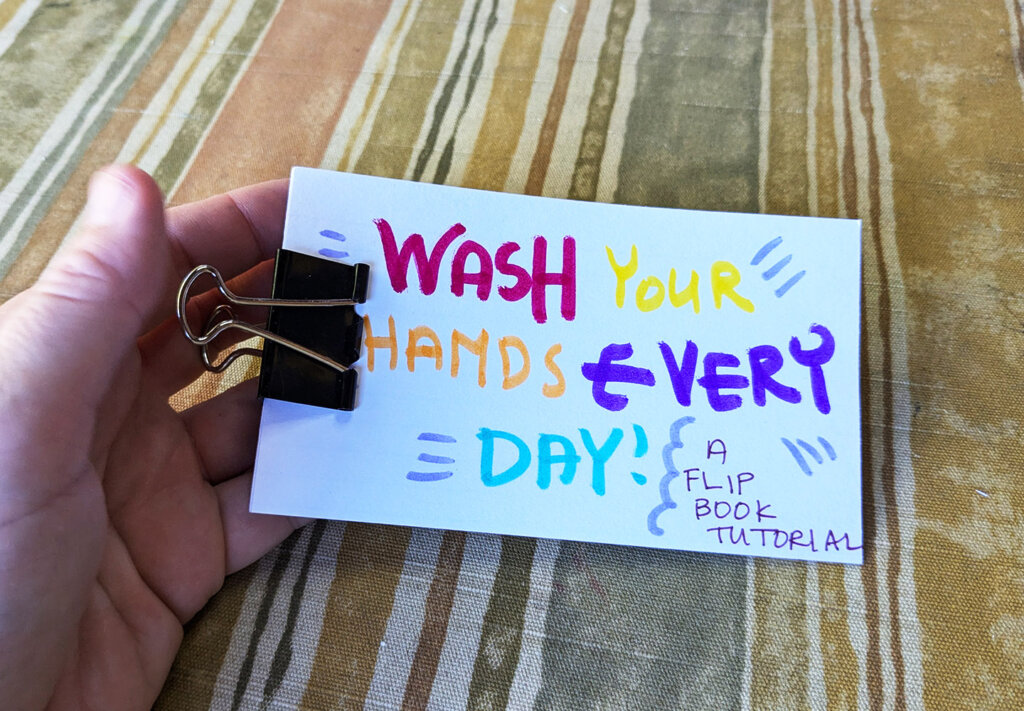Healthy Habits Flipbook
Healthy Habits Flipbook
Topic: Identifying Important Entrepreneurial Traits
Empowerment Video: Epidemiology
Basic Supplies:
- Lightweight blank paper around 3” x 5” such as thin index cards, one small stack per student
- A binder clip, one per student
- Basic art supplies such as pencils, markers, colored pencils, and crayons
Video Discussion:
Ask, “Who has ever had a cold, the flu, or gotten sick from bad food?”
Allow students to briefly share their experiences.
Tell students that there is a career that works to track sicknesses like the flu and help prevent and contain illnesses caused by bad food.
Introduce the term epidemiologist and provide a general job description. Oxford Languages defines an epidemiologist as "a person who studies or is an expert in the branch of medicine which deals with the incidence, distribution, and possible control of diseases."
After watching the video Epidemiology, ask your students the following questions:
- What skills or characteristics do you think it takes to be a successful epidemiologist? Why do you think that?
- What do you think epidemiologists do all day? Is every day the same?
- What would be the most exciting part about being an epidemiologist? What would be the least exciting? Why?
- What might inspire someone to pursue a career in epidemiology?
- If you had to explain an epidemiologist’s job to a student in kindergarten, what would you say?
Activity Instructions:
Healthy habits are essential for keeping ourselves and others safe.
In this activity, students will think about healthy habits that prevent the spread of illness. Then, they will create a flipbook that shows these habits in action, reinforcing the importance of the daily choices that keep everyone healthy.
- Choose one healthy habit that you would like to focus on such as washing your hands or properly covering your mouth when coughing.
- Plan out the steps that you will include in your flipbook. For example, if you choose to focus on washing your hands you might show these steps:
- Turning on the water
- Applying soap
- Scrubbing hands
- Rinsing
- Drying
- Get your index cards, binder clip, and drawing materials.
- Align your index cards so they are in a neat stack. Clip your binder clip securely to the top to hold the stack together.
- Starting on the bottom page of your flipbook, draw your first image in the bottom righthand corner of your paper. For example, if you are focusing on handwashing, you might draw a faucet with a hand on the knob. Make sure your drawing is small, taking up no more than ¼ of the page.
- Draw the same image on the next sheet, varying it just slightly. In our example, the hand may be slightly rotated on the faucet handle to show that the water is being turned on or the water may start coming out of the faucet. Hint: Drawing in pencil makes it easy to adjust your pictures later in case you need to make changes.
- Continue drawing one new image on each sheet of paper, working from the bottom paper towards the top paper. When you have drawn a series of images to show each of your steps, your flipbook will be complete!
- Once your flipbook is finished, hold the bottom-right edge of the stack with your thumb. Slowly release the pages upward, one by one, to flip through the book and watch your animation come to life.
- If your flipbook animation isn't as smooth as you'd like, don't worry! You can make adjustments in two ways:
- Add more pages: Simply remove the binder clip, insert the new page(s), and clip your book back together.
- Revise parts of your drawing: Simply erase parts of your drawings and redraw them to improve the flow of your animation.
- Keep tweaking your flipbook by adding more pages or revising parts of your drawings until you're happy with the final result!
- Optional: Go back and add some color to your drawings using crayons, marker, or colored pencils.
- Now you’re ready to share your flipbook with your classmates or family members. As you flip through the pages, explain each step of your healthy habit and why it's important for staying well. This is a great way to spread awareness and encourage others to adopt healthy practices too.



